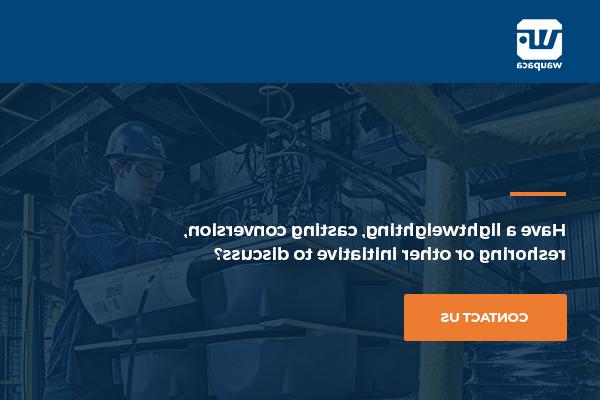Speeding the Adoption of Additive Mfg.
阿什利Eckhoff | 工业 Equipment 新闻
Speeding the Adoption of Additive Mfg.
When beginning to consider all that is needed to make additive a reality, 很明显,设计和制造零件的传统方法正在消失.
Additive 制造业 (AM), or 3D printing offers a number of potential innovations in product design, 而其灵活的制造能力可以支持分布式制造模式——帮助释放新的业务潜力. 然而, 当企业开始考虑让增材制造成为现实所需的一切——比如生成式设计, part consolidation, 而拓扑优化——很明显,设计和制造零件的传统方法正在消失.
然而, adoption of new 制造业 technologies always faces challenges. 幸运的是, great strides have been made in bringing AM into the mainstream. 新兴的工具, 工艺和技术已经脱颖而出,使采用者更接近工业化添加剂, most notably in the form of simulation.
A Brave New Material World
Material choice is the first decision and one of the most important for AM applications. The selection is based on design requirements, including weight, 强度, thermal performance and cost targets. 例如, a designer might choose titanium to meet specific 强度 parameters, whereas choosing aluminum meets cost constraints. Both materials are printable using AM techniques, but the choice of materials depends on the design and business needs.
目前, 材料增材制造的故事是一个不断增长的潜力——无论是金属还是聚合物. 可用材料的清单无法与传统制造方法中可用的材料进行比较, but it is growing. In the past five years, certified AM materials have expanded from several hundred to over 3000, with new ones being continuously certified. We expect to see the market for printable materials continue to grow, and we are excited by the new design possibilities that expansion will enable.
在AM零件的设计和验证过程中,先进的仿真和CAD功能对于充分理解这些新材料的特性至关重要. Simulation using conventional, 如果没有大量的预先校准,标准的有限元分析技术无法模拟这些材料.
最近, 新的多尺度有限元分析功能已经出现,通过将局部微观结构模型与被分析部件的全局尺度模型相结合,可以帮助预测3D打印部件的耐用性. These two analyses are performed simultaneously, and the results from one model affect the behavior of the other. 这种单独求解各域然后将结果联系起来的方法比标准有限元分析方法更精确, 1,000x the efficiency. 其结果是能够模拟打印部件中材料的完整性能.
Innovative Geometries
增材制造的物体几乎可以是由3D模型定义的任何形状或几何形状. It is a geometry agnostic technology, 允许公司制造和生产复杂的几何形状以前不可能与传统的注射成型或减法制造方法. The near-limitless geometries also enable part consolidation.
而不是将一个系统分解成多个组件的可制造性与CNC或铸造方法, AM can reduce even the most complex geometries into a few or even one part. 精明的工程师甚至可以将弹簧或机械开关等功能集成到系统中,以进一步减少零件数量.
These complex geometries can be a double-edged sword, as they are not easily defined in traditional CAD techniques. 需要具有强大仿真能力的多学科生成工程支持工具. 设计空间探索功能可以自动寻找满足多种性能要求的最佳设计, iterating on hundreds of possible designs in a matter of minutes. 它还可以帮助用户可视化在竞争目标和约束之间的设计性能权衡.
Simulation is the friend of every designer working with AM technologies. When designing a part for additive 制造业, it is imperative to verify and simulate the print before committing to 制造业. The medical industry is very familiar with this, being an early adopter of 3D printing to create custom implants such as replacement joints.
As part of this process, designers rely on specialized tools for simulating the metal printing process. Printing a hip joint in titanium can take up to 32 hours; a problem occurring mid-way through a print could cost up to $50K in wasted time and materials. Therefore, simulation before physically printing can save time and money.
Scaling for 工业
Another hurdle for additive 制造业 is scaling it to mainstream production, producing thousands of parts quickly with high 质量. While progress has been made towards this goal, there are still unknowns and challenges for each processing method. Whether it is thermoplastics, composites or metal, there are many material interactions still not fully understood. This is a problem for part repeatability and process accuracy, creating a need for new design methods and new technology.
增材制造包括将材料加热到极端温度,然后将材料冷却成所需的形状. Printed parts cool in relative free-space. Consequently, the parts do not cool homogeneously, which can lead to unexpected distortions. 结果是, 为了获得可接受的热负荷和冷却循环,通常需要多次迭代, 导致大量的废料,并经常违背利用增材制造的快速生产能力的目的.
幸运的是, 基于计算流体动力学(CFD)技术的鲁棒模拟可以预测热机械变形,然后对CAD几何形状提出可能的改变,以纠正这些变形. 除了, 先进的增材制造准备和模拟软件可用于预测和纠正由于挤出机或激光沿着其3D打印路径移动而产生的过热中尺度缺陷.
It is also possible to predict where and why the part might fail, helping designers to optimize 3D printed parts down to the microstructural level. As these solutions for driving sophisticated 3D printing machinery, achieving a repeatable, 质量, industrial AM process will become commonplace.
Maximizing the Potential
Even in this brief discussion, 很明显,应对增材制造的挑战需要采用新的设计思维和新的制造方法. For most early adopters, this is a gradual process as opposed to an all-or-nothing approach.
Often, this process starts at a minimal level. 在德国, 汽车公司正在尝试将这种方法结合起来,使用增材制造和设计软件来制造结构合理的汽车框架. They may not be printing an entire car, but they are taking extruded hollow beams, like those used in traditional automobile 制造业, and printing nodes to connect those beams together.
这些节点包括内部的印刷晶格结构,以最小的重量损失产生所需的结构刚度. By starting small and focusing on an achievable goal, they’re printing durable, efficient parts that could eventually change future automobile 制造业.
Meanwhile in the aerospace industry, 质量 production is being augmented by sophisticated simulation. 仿真驱动的设计技术现在用于最小化零件重量和材料使用,同时保持必要的结构特性. 然后, during 制造业, simulation is used again to ensure a 质量 output from the build setup and print process.
在这些例子中,我们看到技术提高了各行各业和世界各地的产量. 这就是增材制造的创新和发展,将技术提升到工业生产水平所需要的.
Additive 制造业 may be relatively innovative, but it is rapidly growing as new materials are certified, generative engineering is embraced, topology optimization becomes the norm and 制造业 software is introduced and adopted. 传统的制造方法已经建立了几个世纪:铸造从青铜时代开始,锻造从铁器时代开始.
We are only beginning to learn how AM technology can change design and 制造业. During this exciting time of discovery and maturation, 一种专注于增材制造能力和挑战的设计精神,以及一种新的制造方法,正使增材制造更接近引发下一次工业革命.

